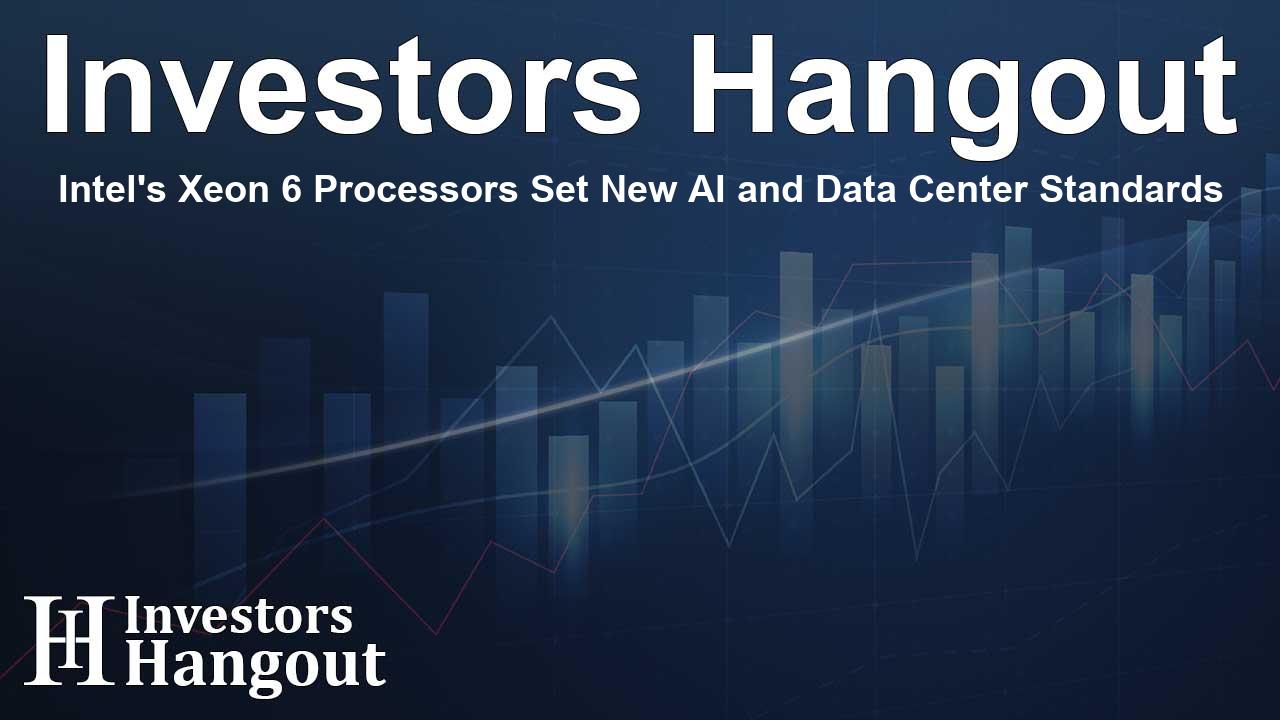Intel's Xeon 6 Processors Set New AI and Data Center Standards

Introduction to Intel's Xeon 6 Processors
Intel Corp has just rolled out its next-generation Intel Xeon 6 processors, marking a significant leap forward in performance. These processors are designed with advanced performance cores, allowing them to deliver an impressive enhancement in AI processing capabilities—up to twice the previous benchmarks. As organizations increasingly rely on AI for their operations, Intel is positioning itself to meet the growing demand for powerful computing solutions.
Key Features of Xeon 6 Processors
The Xeon 6 series includes innovations aimed specifically for network and edge computing applications. One noteworthy feature is the integration of Intel vRAN Boost technology, which notably increases radio access network capacity by an impressive 2.4 times. This boost makes the Xeon 6 processors exceptionally suited for modern data center workloads, especially where AI and high-performing computing are essential.
Performance Gains Over Previous Generations
With the Intel Xeon 6700/6500 series processor, users can expect a substantial performance improvement—averaging 1.4 times greater performance than the prior generation. This leap in capability comes as businesses transition towards more sophisticated AI systems that demand robust central processing unit (CPU) support. Therefore, Xeon 6 serves not just as a powerful processor but as the backbone for future-ready AI systems.
Power Efficiency and Capacity Improvements
Another critical aspect of the Xeon 6 is its design as a system-on-chip (SoC), which emphasizes exceptional power efficiency. Intel has embedded accelerators aimed at enhancing virtualized radio access networks, media processing, AI functions, and bolstering network security. Compared to older models, users can expect a 70% improvement in performance-per-watt, allowing for cost-saving measures in energy usage while maximizing performance.
Market Trends and Future Outlook
As the AI landscape evolves, companies are projected to invest significantly in machine learning and analytics. By 2027, spending on generative AI is expected to reach approximately $153 billion, with total investments in the field topping $361 billion, according to market analysts. Intel is keenly aware of these trends, ensuring its Xeon 6 series is equipped to support the demands of this booming sector.
The Competitive Landscape
Despite the promising features of its new processors, Intel has faced challenges recently. Over the past year, the company's stock has seen a drop exceeding 43%, as competitors like Advanced Micro Devices, Inc (AMD) and Broadcom Inc (AVGO) have gained market share. Notably, reports have suggested that Taiwan Semiconductor Manufacturing Co (TSM) and Broadcom are contemplating expansions that could further erode Intel's position in the marketplace.
Conclusion
Intel's Xeon 6 processors represent a significant stride into the future of AI and data center technology. With enhanced performance, remarkable power efficiency, and the ability to handle increasingly demanding workloads, the Xeon 6 series is poised to play a pivotal role in shaping the next generation of computing. For businesses looking to optimize their operations in an AI-driven world, investing in this advanced technology could be the key to maintaining competitiveness.
Frequently Asked Questions
What are the main benefits of Intel's Xeon 6 processors?
The Xeon 6 processors offer up to twice the AI performance, improved power efficiency, and higher capacity for data processing, making them ideal for modern data centers.
How do Xeon 6 processors compare to previous generations?
They provide an average of 1.4x better performance across various enterprise workloads compared to older models, along with significant gains in performance-per-watt.
What market trends are influencing Intel's Xeon 6 processors?
The rise in generative AI and machine learning is shaping the demand for high-performance, efficient computing solutions, which the Xeon 6 is designed to address.
Who are Intel's main competitors in the chip market?
Key competitors include Advanced Micro Devices (AMD), Broadcom Inc (AVGO), and Taiwan Semiconductor Manufacturing Co (TSM), all of which are actively expanding their markets.
How has Intel's stock performed recently?
Intel's stock has declined over 43% in the past year, reflecting challenges in gaining back market share amidst fierce competition.
About The Author
Contact Caleb Price privately here. Or send an email with ATTN: Caleb Price as the subject to contact@investorshangout.com.
About Investors Hangout
Investors Hangout is a leading online stock forum for financial discussion and learning, offering a wide range of free tools and resources. It draws in traders of all levels, who exchange market knowledge, investigate trading tactics, and keep an eye on industry developments in real time. Featuring financial articles, stock message boards, quotes, charts, company profiles, and live news updates. Through cooperative learning and a wealth of informational resources, it helps users from novices creating their first portfolios to experts honing their techniques. Join Investors Hangout today: https://investorshangout.com/
The content of this article is based on factual, publicly available information and does not represent legal, financial, or investment advice. Investors Hangout does not offer financial advice, and the author is not a licensed financial advisor. Consult a qualified advisor before making any financial or investment decisions based on this article. This article should not be considered advice to purchase, sell, or hold any securities or other investments. If any of the material provided here is inaccurate, please contact us for corrections.
